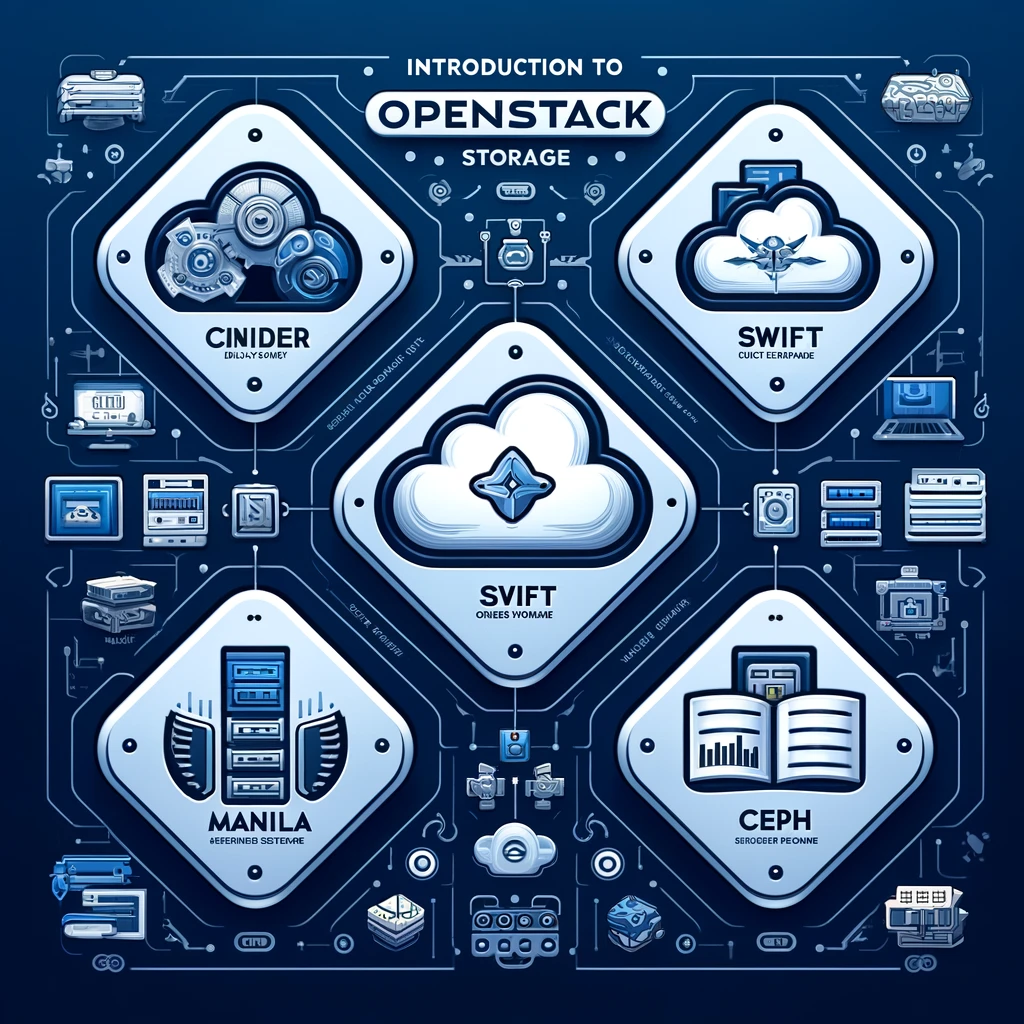Table of Contents
Best Practices for OpenStack Storage: Cinder, Swift, and Beyond – Provide insights on best practices for managing storage in OpenStack, including block and object storage options.
OpenStack provides robust options for storage management, making it a versatile choice for handling diverse workloads and storage needs in cloud computing environments. This extensive guide will cover the best practices for managing storage in OpenStack, focusing on block and object storage solutions provided by Cinder and Swift, respectively, as well as considering other storage alternatives and techniques.

Introduction to OpenStack Storage
OpenStack’s storage services are designed to be highly scalable and fault-tolerant, catering to different types of storage demands: block storage for instances (Cinder), object storage for scalable, system-independent data storage (Swift), and shared file system storage (Manila).
Cinder: Block Storage Best Practices
Cinder is OpenStack’s Block Storage service that provides persistent block storage to run instances. Here’s how to optimize its deployment:
Choose the Right Backend: Cinder supports a variety of storage backends, including LVM (Logical Volume Manager), NFS (Network File System), Ceph, and more specialized hardware from vendors like NetApp and Dell EMC. The choice of backend should align with your performance needs, budget, and existing infrastructure.
High Availability: Implement Cinder in a highly available configuration to prevent downtime and ensure continuous accessibility. This involves configuring Cinder services to run on multiple nodes and using a storage backend that supports redundancy and failover, such as Ceph.
Backup Strategies: Regular backups are crucial to prevent data loss. Cinder integrates with OpenStack’s Backup service, which allows users to back up their Cinder volumes to Swift, ensuring that backups are stored in a different service to avoid a single point of failure.
Volume Type Management: Create different volume types for various needs, such as SSD-based volumes for high-performance requirements and SATA-based volumes for less critical data. This helps in optimizing costs and performance across applications.
Encryption: Use Cinder’s built-in encryption feature to secure data at rest, particularly important for sensitive or regulated data. Encryption is transparent to the user and is managed at the volume level.
Swift: Object Storage Best Practices
Swift provides a scalable object storage system that manages data at scale and is ideal for unstructured data such as videos, images, and backups.
Storage Policies: Define storage policies in Swift that dictate data placement, number of replicas, and type of drives (HDD or SSD). This can help in meeting different service levels and optimizing performance and cost.
Capacity Planning: Monitor and plan capacity usage effectively to ensure that Swift clusters are scaled before reaching their maximum capacity. Utilize tools like Grafana and Prometheus for detailed metrics and forecasting.
Data Durability: Ensure high data durability by configuring the appropriate number of replicas for objects stored in Swift. Typically, three replicas are recommended to balance durability and cost.
Performance Tuning: Tune performance parameters such as the number of proxy servers and network configurations to handle the expected load. Consider using SSDs for frequently accessed data to improve response times.
Secure Access: Implement ACLs (Access Control Lists) and temporary URLs to manage access to objects in Swift securely. This ensures that data is accessible only to authorized users and services.
Beyond Cinder and Swift: Exploring Manila and Ceph
Manila: Shared File Systems: For applications requiring shared access to files from multiple instances, Manila offers a shared file system service that integrates with several storage backends like NetApp, CephFS, and NFS. Best practices include setting up secure access permissions and ensuring regular snapshots for data recovery.
Ceph as a Unified Storage Solution: Ceph can act as a backend for Cinder, Swift, and even Manila, providing a unified storage solution across block, object, and file storage needs. Best practices for Ceph include using separate pools for different storage types, monitoring cluster health with tools like Ceph dashboard, and ensuring adequate redundancy and replication.
Conclusion
Efficient management of storage in OpenStack involves understanding the capabilities and best practices of Cinder and Swift, as well as exploring other integrated solutions like Manila and Ceph for comprehensive storage needs. By following these best practices, organizations can optimize their OpenStack storage performance, scalability, and reliability, making their cloud environments robust and responsive to changing data demands.
Go Blog Home
